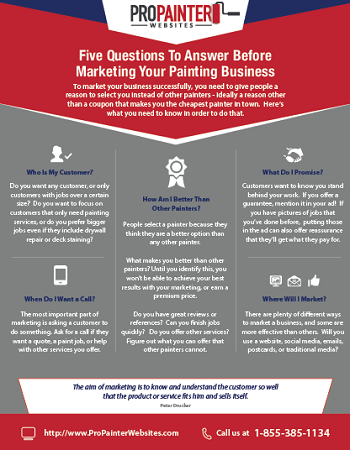Explore The Role Of Seasonal Consider The Success Of Industrial Outside Painting And Uncover The Most Effective Times To Safeguard Lasting Results For Your Task
Explore The Role Of Seasonal Consider The Success Of Industrial Outside Painting And Uncover The Most Effective Times To Safeguard Lasting Results For Your Task
Blog Article
Content Composed By-Regan Celik
When you're preparing a commercial external paint project, seasonal aspects can make or damage your results. You'll want to think about just how temperature and humidity influence paint application and drying out times. Picking the right season can guarantee your paint sticks correctly and lasts longer. However which seasons are genuinely the most effective for this sort of work? Let's check out the crucial elements that can affect your project's success.
The Influence of Temperature on Paint Application
When you're intending an industrial external painting project, the temperature level can considerably affect exactly how well the paint adheres and dries out.
Preferably, you want to repaint when temperature levels vary in between 50 ° F and 85 ° F. If it's as well chilly, the paint might not cure properly, resulting in problems like peeling off or fracturing.
On the other side, if it's too hot, the paint can dry out too swiftly, preventing proper bond and resulting in an irregular surface.
You need to likewise consider the time of day; morning or late afternoon uses cooler temperatures, which can be more desirable.
Always inspect https://independentpaintersnearme49260.ambien-blog.com/40831081/transform-your-home-s-outside-the-advantages-of-working-with-specialist-home-painters for the specific paint you're making use of, as they often give guidance on the excellent temperature level variety for optimal results.
Humidity and Its Result on Drying Times
Temperature level isn't the only ecological factor that influences your business outside painting task; humidity plays a significant role also. High humidity degrees can decrease drying out times dramatically, impacting the total high quality of your paint task.
When the air is filled with dampness, the paint takes longer to treat, which can result in problems like bad adhesion and a greater threat of mold growth. If you're painting on an especially humid day, be planned for prolonged wait times in between layers.
It's essential to check regional climate condition and plan appropriately. Preferably, go for humidity degrees in between 40% and 70% for ideal drying.
Keeping these consider mind ensures your task stays on track and provides a lasting coating.
Best Seasons for Commercial Outside Paint Projects
What's the most effective time of year for your business outside painting tasks?
Spring and early loss are generally your best bets. Throughout these seasons, temperature levels are moderate, and moisture levels are usually reduced, creating suitable problems for paint application and drying out.
Avoid summer season's intense heat, which can trigger paint to completely dry too rapidly, leading to poor attachment and finish. Likewise, winter season's chilly temperatures can impede appropriate drying and healing, taking the chance of the longevity of your paint job.
Aim for days with temperatures between 50 ° F and 85 ° F for ideal results. Remember to inspect the local weather report for rainfall, as damp conditions can destroy your job.
Planning around these variables ensures your painting task runs smoothly and lasts much longer.
Conclusion
In conclusion, planning your industrial outside painting projects around seasonal considerations can make a considerable distinction in the result. By painting contractors texas during the ideal temperature levels and moisture levels, you'll make sure much better adhesion and drying times. Bear in mind to keep an eye on regional weather forecasts and pick the right time of year-- springtime and early fall are your best options. Taking these actions will help you accomplish a resilient and professional finish that lasts.
